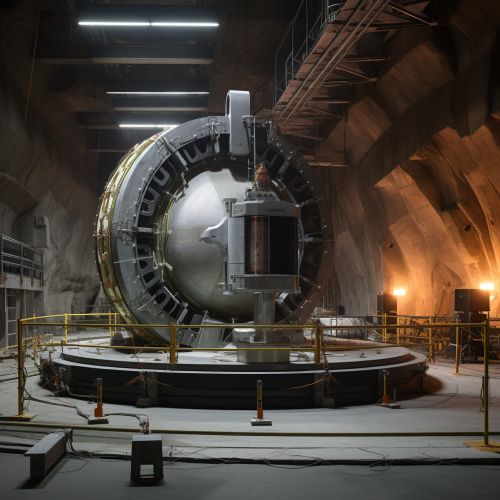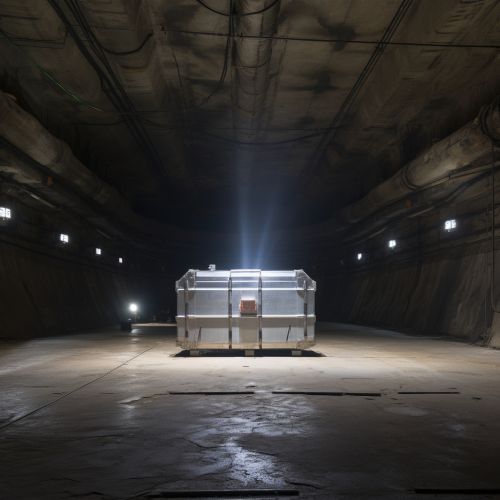Deep Underground Neutrino Experiment
Introduction
The Deep Underground Neutrino Experiment (DUNE) is a large-scale, international scientific research project aimed at studying the properties of subatomic particles known as neutrinos. The project is a collaborative effort involving more than 1,000 scientists and engineers from over 30 countries. The primary goal of DUNE is to gain a deeper understanding of neutrinos and their role in the universe.


Overview
DUNE is based at the Fermi National Accelerator Laboratory (Fermilab) in Batavia, Illinois, USA, and utilizes the Long-Baseline Neutrino Facility (LBNF) to generate a high-intensity beam of neutrinos. This beam is directed through the Earth to the Sanford Underground Research Facility (SURF) in Lead, South Dakota, where the DUNE detectors are located. The distance between the two facilities is approximately 1,300 kilometers, making it the longest baseline neutrino experiment to date.
Neutrinos and their Importance
Neutrinos are one of the most abundant particles in the universe, yet they are also one of the least understood. They are electrically neutral, nearly massless, and interact with other matter only through the weak nuclear force, making them extremely difficult to detect. Despite these challenges, the study of neutrinos is of great interest to physicists due to their potential to answer fundamental questions about the nature of the universe.
DUNE's Scientific Goals
DUNE has several key scientific objectives. These include:
- Determining the ordering of the neutrino mass states, a phenomenon known as neutrino mass hierarchy.
- Measuring the charge-parity (CP) violation in neutrinos, which could help explain the matter-antimatter asymmetry in the universe.
- Searching for proton decay, a predicted but as yet unobserved phenomenon that would provide evidence for Grand Unified Theories (GUTs).
- Studying neutrinos from supernovae, which could provide valuable insights into the processes that occur during a star's explosive death.
Experimental Design
The DUNE experiment utilizes two types of detectors: a near detector located at Fermilab, and a far detector located at SURF. The near detector measures the properties of the neutrino beam as it leaves Fermilab, while the far detector measures the properties of the neutrinos after they have traveled the 1,300 kilometers to SURF. By comparing these measurements, scientists can study how the neutrinos have changed, or oscillated, during their journey.


Current Status and Future Prospects
Construction of the DUNE experiment began in 2017 and is expected to be completed by 2027. Once operational, DUNE will be one of the most sensitive neutrino detectors in the world, capable of making precise measurements that could revolutionize our understanding of these elusive particles.
